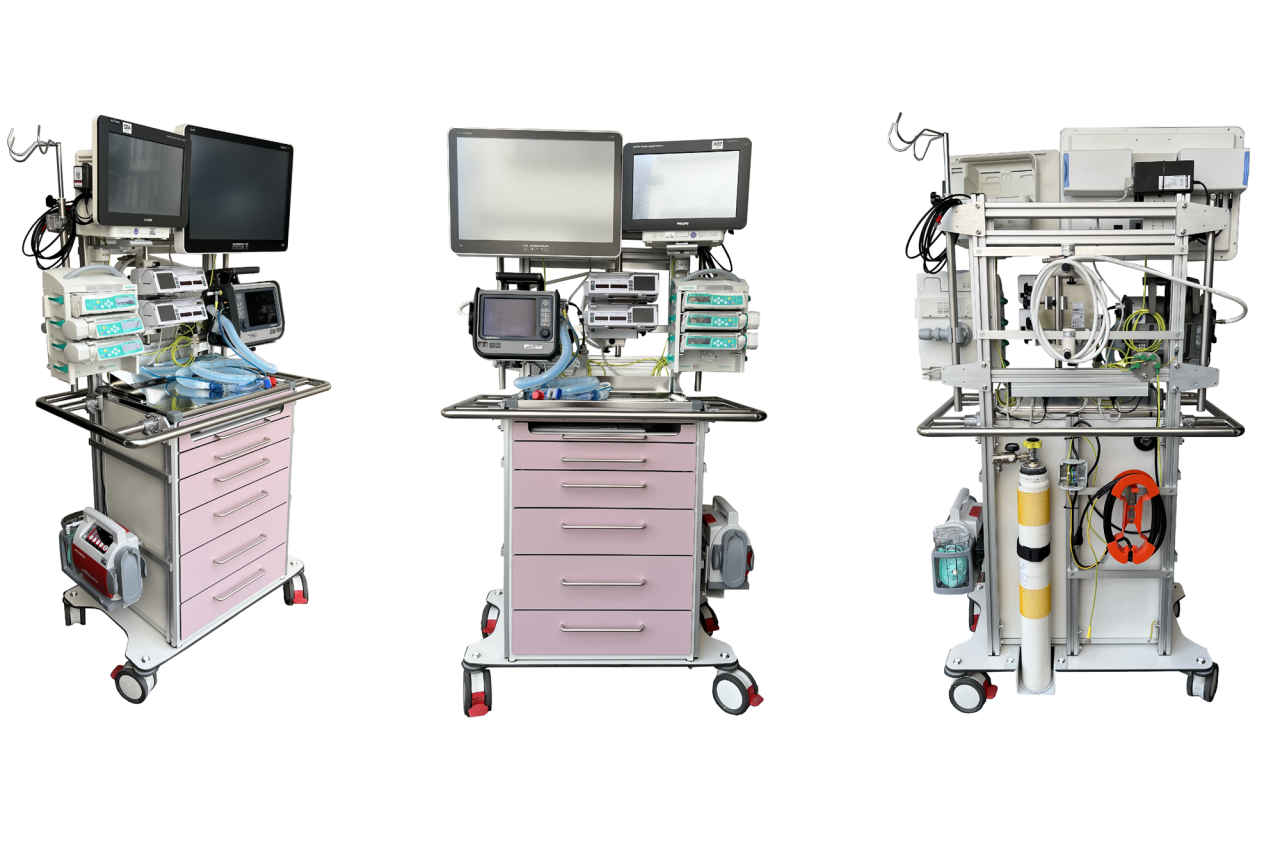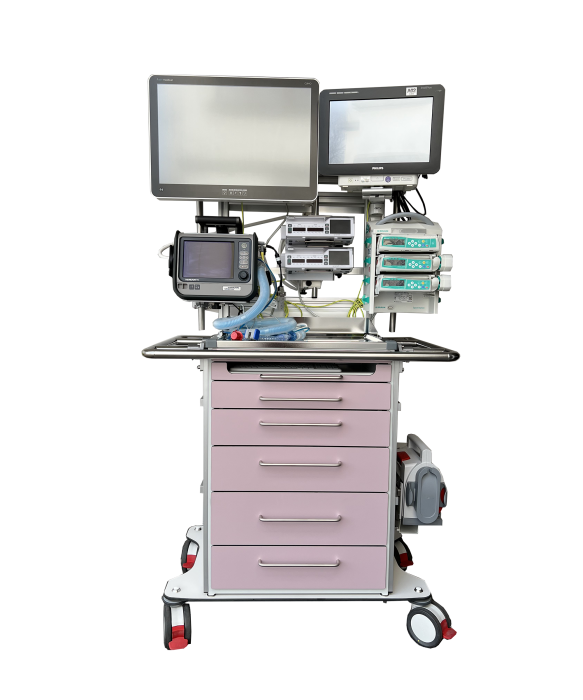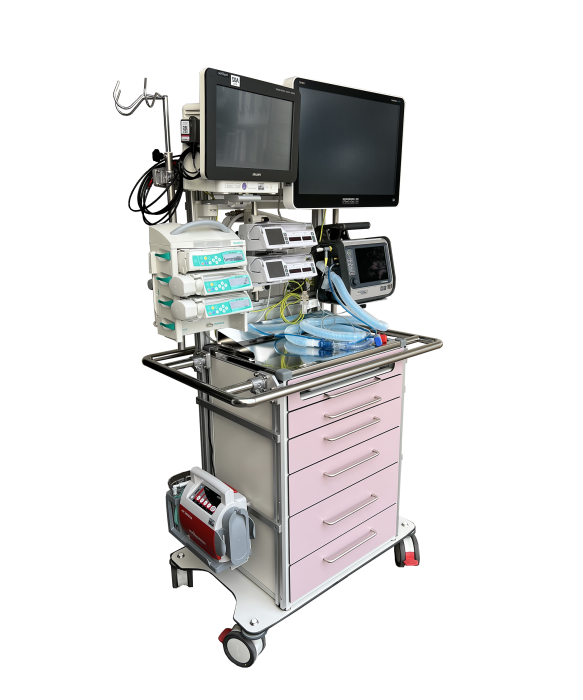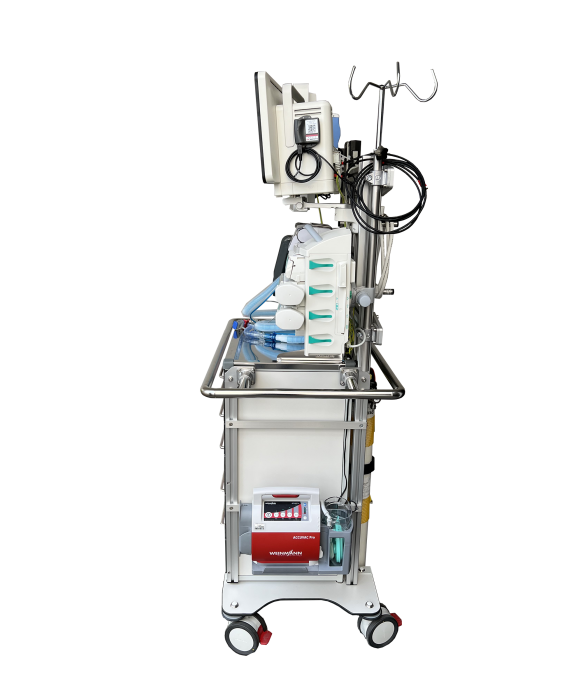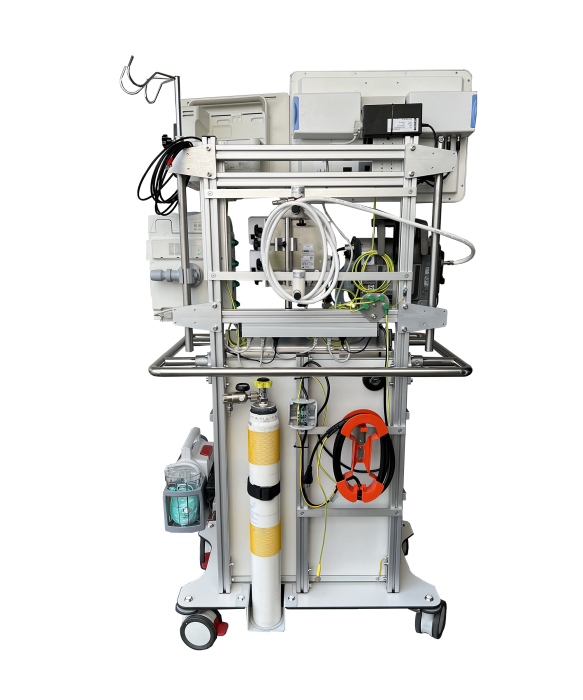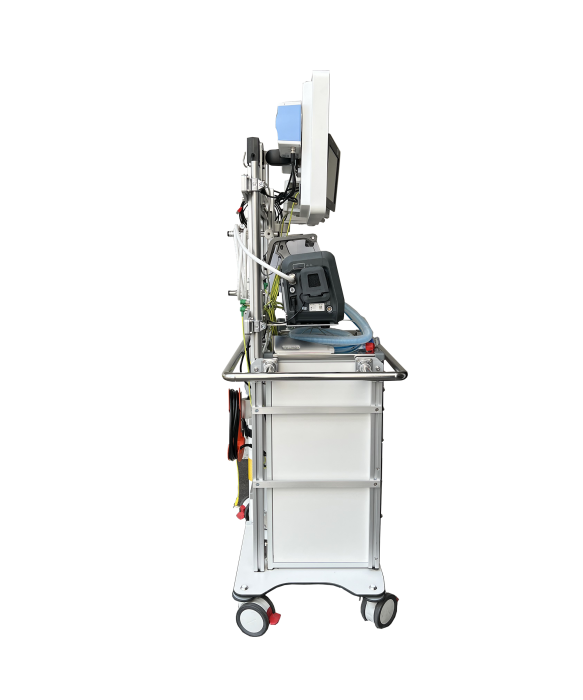Positive impact on patient management, the patient path and logistical processes
As part of the replacement procurement of respirators, those responsible for anaesthesia asked themselves what optimisations were possible, particularly in the area of NORA. Non-operating room anaesthesia (NORA) poses major challenges in terms of organisation and logistics.
In this zone outside the operating room, patients are anaesthetised for interventional procedures. The challenge of the NORA is that the rooms are distributed throughout the hospital, in which different interventional procedures are offered and correspondingly different anaesthesia services are obtained. This decentralisation makes it challenging to have all the material for planned and unplanned situations with you at all times.
The current anaesthesia workstations are optimised in different variants for the existing location and permanently installed.
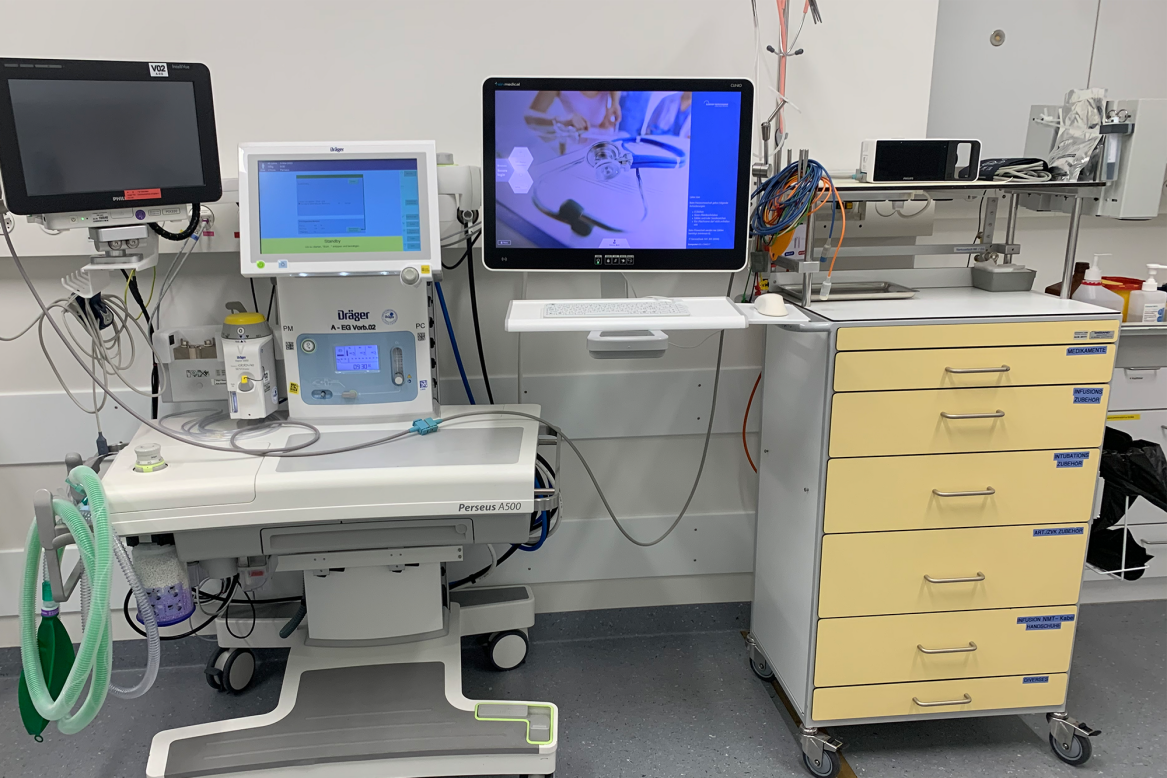
The project team wants to reduce the complexity of the workstations for operating rooms with very different NORA requirements or with low frequencies, thereby increasing flexibility. The idea of a mobile anaesthesia unit was born, which would not only accompany patients during the entire procedure, but also simplify logistics and enable other forms of respiration.
With the start of the project, the Medical Technology department, headed by Othmar Schurtenberger, Project Manager Medical Technology, took up the concerns of the anaesthesia department and drew up drafts for a possible implementation. Based on these drafts, we looked for a partner to build a prototype for our project. In Wiegand AG, we found the ideal partner who was able to realise our requirements both in terms of timing and technology.
Dr Romedi Benz justifies the investment in a mobile anaesthesia unit with the strong development of NORA in recent years. More and more new medical fields require anaesthesia support for highly specialised minimally invasive procedures, and the number of anaesthetics is increasing accordingly. The optimisation and flexibilisation of anaesthesia equipment is necessary in order to continue working efficiently, safely and in a resource-saving manner in the future.
The requirements for a mobile anaesthesia unit were analysed by the interdisciplinary project team. The characteristics that the mobile anaesthesia unit should fulfil were determined by the requirements of medicine, patient safety, IT and logistics.
- Minimum space requirement and room-independent operation of the devices
- If possible, only use equipment that has already been installed
- Safe transport by just one person
- Access to patient data, documents and seamless automatic documentation of vital data
- It must be possible to carry standard anaesthesia material for at least one patient
- Compliance with existing organisational/quality standards
The start of the project in November 2021 together with Wiegand, a company known for customised wagon development, gave the project team hope that a solution could be found.
The basic construction of the mobile anaesthesia unit is a Wiegand AG trolley construction. The drawer body was fitted with a reinforced base plate. In addition, special swivel castors were used so that it can also be moved over cables or hoses. The trolley was equipped with a robust attachment with equipment rails, which allow the equipment to be positioned individually. This means that the anaesthesia team can easily modify the trolley if the equipment changes. There are further equipment rails on the body. The centre of gravity of the trolley has been positioned so that it is in the middle under the equipment (anti-tip protection). A robust all-round stainless steel handle was fitted to the trolley so that it can be moved into the desired position by just one person.
The mobile anaesthesia unit was able to fulfil the wishes and requirements of all those involved.
Specific requirements
Medical requirements:
- All the necessary material can be stored in the drawers and organised clearly. The drawers can be arranged according to a standard so that the material can be found immediately by all anaesthesia staff.
- The new transport respirator and the new electric suction unit could be fitted to the trolley.
- The existing monitors, syringe pump and TCI pumps could be attached to the trolley. This means that there are no additional procurement costs and no staff training is required.
IT requirements:
- The keyboard and mouse are located in the first drawer of the cabinet and are ergonomically accessible. The keyboard and mouse can be used without tangled cables and are housed in a space-saving location (USB port permanently installed in the drawer).
- Existing touchscreen medical PC (LUKiS-capable) has been attached
- WLAN connection for vital and respiratory data for automatic logging
- LAN option for raw data and remote monitoring via monitor centre
Logistical requirements:
- Requirement for continuous operation 1x 230V AC, potential equalisation and oxygen connection
- All devices used have their own battery supply and can be used for at least one hour without a permanent power connection.
- Space for 1,000 litre oxygen cylinder (automatic switchover valve for central oxygen supply or cylinder)
- As a transportable anaesthesia unit, the trolley can be moved by just one person.
The use of the mobile anaesthesia unit should make it possible in future to accompany patients during all examinations, treatments and interventions. This means that the anaesthetist always has the necessary monitoring, material and documentation compactly available on site.
The mobile anaesthesia unit is currently undergoing clinical trials at Lucerne Cantonal Hospital. The arrangement of the equipment, materials and aids is constantly being optimised before the decision to purchase is made. Romedi Benz is convinced that this unit will have a positive impact on patient management, the patient pathway and logistical processes. “The key to success is to scale resources such as personnel and materials flexibly and predictably. The mobile anaesthesia unit is a step in this direction.”
Transcript Lecture by Dr Romedi Benz, Head Physician, Department of Anaesthesia at Lucerne Cantonal Hospital, at the “Future OP” specialist event at Lucerne Cantonal Hospital

